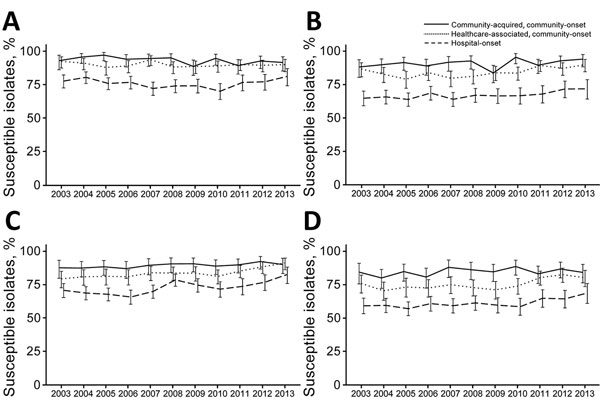Volume 23, Number 11—November 2017
Research
Antimicrobial Nonsusceptibility of Gram-Negative Bloodstream Isolates, Veterans Health Administration System, United States, 2003–20131
Figure 3

Figure 3. Trends of selected antimicrobial susceptibilities for Pseudomonas aeruginosa isolates from patients with bacteremia, Veterans Health Administration System, United States, 2003–2013. A) Antipseudomonal carbapenems, B) Antipseudomonal cephalosporins, C) Aminoglycosides, D) Antipseudomonal fluoroquinolones. Error bars indicate 95% CIs.
1Preliminary results from this study were presented at the 25th European Congress of Clinical Microbiology and Infectious Diseases, April 25–28, 2015, Copenhagen, Denmark; and at the Society for Healthcare Epidemiology of America Spring Meeting, May 14–17, 2015, Orlando, Florida, USA.
Page created: October 16, 2017
Page updated: October 16, 2017
Page reviewed: October 16, 2017
The conclusions, findings, and opinions expressed by authors contributing to this journal do not necessarily reflect the official position of the U.S. Department of Health and Human Services, the Public Health Service, the Centers for Disease Control and Prevention, or the authors' affiliated institutions. Use of trade names is for identification only and does not imply endorsement by any of the groups named above.